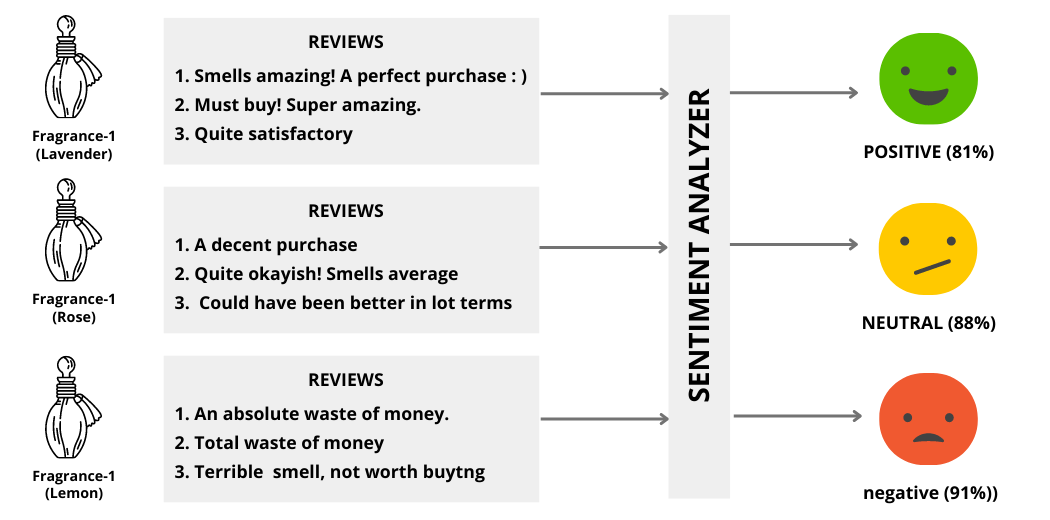In today’s digital age, social media has become an integral part of our lives. It has revolutionized the way we communicate, share information, and express our opinions. With the advent of new social media channels like Threads, there is a growing need for real-time sentiment analysis to understand and analyze the conversations happening online. In this article, we will explore Threads real-time sentiment analysis and how it can unlock the power of conversations with valuable insights.
Threads Real-Time Sentiment Analysis: Revolutionizing Conversations with Actionable Insights

Social media platforms have given individuals and businesses a powerful tool to express themselves and connect with others. Threads, as a new social media channel, provides a unique platform for users to engage in meaningful conversations and share their thoughts and experiences. However, to truly harness the potential of Threads, it is crucial to understand the sentiment behind these conversations. This is where real-time sentiment analysis comes into play.
What is Threads?
Threads is a recently launched social media channel that focuses on facilitating conversations between users. It allows individuals to connect and share their ideas, stories, and opinions dynamically and engagingly. Threads differentiates itself from other platforms by emphasizing real-time conversations, fostering meaningful interactions, and providing a space for open discussions.
The Importance of Real-Time Sentiment Analysis
Real-time sentiment analysis refers to the process of extracting emotions, opinions, and attitudes expressed in conversations or text data. It provides valuable insights into how people feel about a particular topic, brand, or event. For Threads, real-time sentiment analysis holds immense significance as it enables users to gauge the overall sentiment of ongoing conversations and make informed decisions.
How Real-Time Sentiment Analysis Works

Real-time sentiment analysis involves leveraging natural language processing (NLP) techniques to analyze text data. It uses machine learning algorithms to classify the sentiment expressed in the text as positive, negative, or neutral. These algorithms are trained on large datasets to accurately detect the sentiment and understand the context in which it is expressed.
Benefits of Threads Real-Time Sentiment Analysis
- Enhanced User Experience: By analyzing the sentiment of conversations in real-time, Threads can provide a more personalized user experience. Also, it can prioritize relevant content and tailor recommendations based on individual preferences, leading to a more engaging and satisfying user experience.
- Brand Reputation Management: Real-time sentiment analysis enables Threads to monitor and assess the sentiment surrounding brands or products discussed on the platform. Also, this information can be invaluable for businesses in managing their brand reputation and addressing customer concerns promptly.
- Trend Analysis: By analyzing sentiment patterns over time, Threads can identify emerging trends, popular topics, and user preferences. Also, this information can be used to generate insights, develop targeted marketing strategies, and keep users engaged by providing content that aligns with their interests.
- Crisis Management: Real-time sentiment analysis helps in detecting and responding to potential crises promptly. Also, Threads can identify negative sentiments, detect complaints or issues, and take immediate action to address them, ensuring the platform remains a safe and positive space for users.
Applications of Real-Time Sentiment Analysis
Real-time sentiment analysis has a wide range of applications beyond Threads. It can be used in various industries and domains, including:
- Brand Monitoring: Companies can track the sentiment associated with their brand, products, or services across different social media platforms. Also, this information can guide marketing strategies and help in improving brand perception.
- Customer Service: Real-time sentiment analysis can assist customer service teams in monitoring customer feedback, identifying dissatisfied customers, and addressing their concerns promptly, leading to improved customer satisfaction.
- Political Analysis: Real-time sentiment analysis can be utilized during elections or political campaigns to gauge public opinion, understand voter sentiment, and tailor political strategies accordingly.
Challenges in Real-Time Sentiment Analysis
Real-time sentiment analysis is a complex task that comes with its own set of challenges. Some of the common challenges include:
- Context Understanding: Understanding the context and nuances of conversations is crucial for accurate sentiment analysis. Sarcasm, irony, and cultural references can significantly impact the sentiment expressed in text data, making it challenging for algorithms to interpret accurately.
- Multilingual Analysis: Analyzing sentiments in multiple languages adds another layer of complexity to the process. Language-specific nuances, dialects, and idiomatic expressions need to be considered to ensure accurate sentiment classification.
- Real-Time Processing: Processing and analyzing vast amounts of text data in real-time requires robust infrastructure and efficient algorithms. Scalability and processing speed are essential to provide timely insights to users.
Best Practices for Effective Sentiment Analysis
To ensure effective sentiment analysis, the following best practices should be considered:
- Training on Relevant Data: Machine learning algorithms should be trained on relevant and domain-specific datasets to improve accuracy. Also, it is essential to have a diverse dataset that covers different topics, contexts, and sentiment expressions.
- Continuous Model Improvement: Sentiment analysis models should be regularly updated and improved to adapt to changing language patterns and sentiment expressions. Also, this requires continuous monitoring, evaluation, and retraining of the models.
- Human Validation: While automation plays a significant role in sentiment analysis, human validation is crucial to handle complex cases, ensuring accuracy, and avoiding misinterpretation of sentiments.
Future Trends
Real-time sentiment analysis is poised to play an increasingly vital role in the future of social media and communication. As social media platforms like Threads continue to evolve, understanding and analyzing sentiment in real time will become even more critical. Advancements in machine learning, natural language processing, and big data analytics will further enhance the accuracy and capabilities of sentiment analysis systems.
Conclusion
Real-time sentiment analysis empowers Threads and other social media channels to unlock the power of conversations. Also, by understanding the sentiment expressed in conversations, Threads can create a more engaging and personalized user experience, assist businesses in managing their brand reputation, and provide valuable insights for decision-making. With the continuous advancements in sentiment analysis technology, the future holds exciting possibilities for real-time insights from online conversations.
If you’re interested in experiencing the power of real-time sentiment analysis and unlocking the full potential of your social media conversations, we invite you to request a demo from AIM Technologies. See firsthand how their advanced analytics platform can provide you with actionable insights and enhance your understanding of customer sentiment.
FAQs
Q1: How does real-time sentiment analysis differ from traditional sentiment analysis?
- Real-time sentiment analysis focuses on analyzing sentiment in real-time as conversations unfold, while traditional sentiment analysis is often performed on pre-existing data. Also, real-time analysis allows for immediate insights and prompt action based on the sentiment expressed.
Q2: Can real-time sentiment analysis be applied to non-textual data, such as images or videos?
- Yes, real-time sentiment analysis can be extended to non-textual data using techniques like image or video analysis. Also, this allows for a more comprehensive understanding of sentiment across different types of media.
Q3: What are the limitations of real-time sentiment analysis?
- Real-time sentiment analysis may face challenges in accurately interpreting context, sarcasm, or language-specific nuances. Additionally, language barriers and the need for robust infrastructure for real-time processing are also limitations to consider.
Q4: How can real-time sentiment analysis benefit businesses?
- Real-time sentiment analysis can help businesses monitor their brand reputation, identify customer concerns, tailor marketing strategies, and detect potential crises. Also, it provides valuable insights into customer sentiment and preferences.




